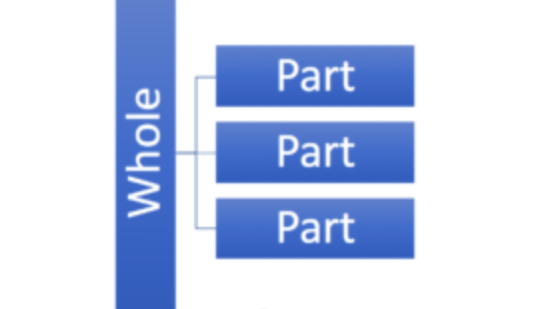8.3: What Is Analysis?
- Page ID
- 58360
- Explain the basics of analysis

Critical thinking skill analysis is the process of methodically breaking something down to gain a better understanding of it. Analysis also includes the ability to connect pieces of information as the basis for generalization or explanation. Analytical assignments in college often couple analysis with the critical thinking skills of interpretation and evaluation.
Analysis can be applied to content but can also cover form, function, and context. For example, an analysis assignment in an art appreciation class might ask you to analyze the subject and iconography of a painting, but also expect you to analyze the use of shape, space, color, and texture (form), as well as the artist’s intended purpose (function) and the culture or time period in which the work was created (context).
While each academic discipline characterizes the analytic process to suit its needs, the essential skills of analysis are the following:
- Breaking down information or artifacts into component parts
- Uncovering relationships among those parts
- Determining motives, causes, and underlying assumptions
- Making inferences and finding evidence to support generalizations
The Language of Analytical Assignments
Although analysis is ubiquitous in college, students sometimes fail to recognize when they are being asked to apply analysis. Often that confusion stems from differences in vocabulary across different disciplines.
For example, each of the verbs in the following list may denote some type of analysis:
| Analyze | Deduce | Examine | Outline |
| Break down | Derive | Experiment | Point out |
| Calculate | Diagram | Identify | Probe |
| Categorize | Differentiate | Induce | Question |
| Classify | Discriminate | Inspect | Separate |
| Compare | Dissect | Infer | Simplify |
| Contrast | Distill | Investigate | Test |
Although this list is a good start, these aren’t the only verbs that denote analysis. Another way to tell whether an assignment is asking for analysis is this: If the assignment asks you to determine how the parts of something relate to the whole, how something works, what something means, or why it’s important, the assignment is asking you to analyze. Below is a list of sample analytic assignments that meet these criteria.
How the parts relate to the whole:
- Classify problems to identify the appropriate algorithms.
- Determine how well a feminist interpretation is supported by evidence contained in a work.
How something works:
- Recognize flaws, inconsistencies, and logical fallacies in an opinion editorial.
- Distinguish between facts and assumptions in a scientific report.
What something means:
- Interpret quantitative relationships in a graph.
- Analyze data/situations to identify root problems.
Why something is important:
- Assess alternative solutions to the health care crisis.
- Separate relevant from irrelevant information in testimony.
analysis: the process of methodically breaking something down to gain a better understanding of it
Contributors and Attributions
- What Is Analysis? and The Language of Analytic Assignments. Authored by: Karen Forgette. Provided by: University of Mississippi. License: CC BY-SA: Attribution-ShareAlike


